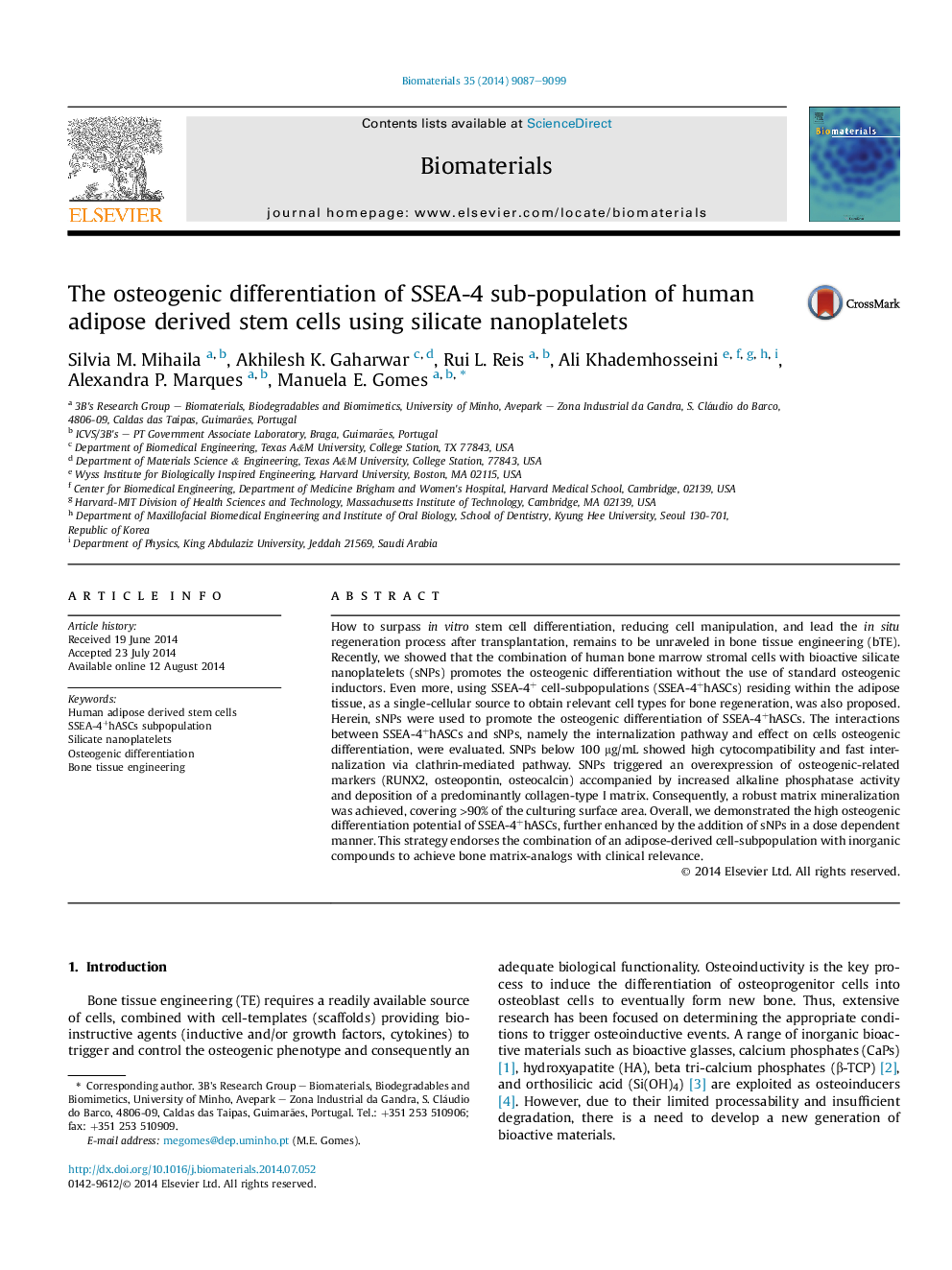| Article ID | Journal | Published Year | Pages | File Type |
|---|---|---|---|---|
| 5807 | Biomaterials | 2014 | 13 Pages |
How to surpass in vitro stem cell differentiation, reducing cell manipulation, and lead the in situ regeneration process after transplantation, remains to be unraveled in bone tissue engineering (bTE). Recently, we showed that the combination of human bone marrow stromal cells with bioactive silicate nanoplatelets (sNPs) promotes the osteogenic differentiation without the use of standard osteogenic inductors. Even more, using SSEA-4+ cell-subpopulations (SSEA-4+hASCs) residing within the adipose tissue, as a single-cellular source to obtain relevant cell types for bone regeneration, was also proposed. Herein, sNPs were used to promote the osteogenic differentiation of SSEA-4+hASCs. The interactions between SSEA-4+hASCs and sNPs, namely the internalization pathway and effect on cells osteogenic differentiation, were evaluated. SNPs below 100 μg/mL showed high cytocompatibility and fast internalization via clathrin-mediated pathway. SNPs triggered an overexpression of osteogenic-related markers (RUNX2, osteopontin, osteocalcin) accompanied by increased alkaline phosphatase activity and deposition of a predominantly collagen-type I matrix. Consequently, a robust matrix mineralization was achieved, covering >90% of the culturing surface area. Overall, we demonstrated the high osteogenic differentiation potential of SSEA-4+hASCs, further enhanced by the addition of sNPs in a dose dependent manner. This strategy endorses the combination of an adipose-derived cell-subpopulation with inorganic compounds to achieve bone matrix-analogs with clinical relevance.
